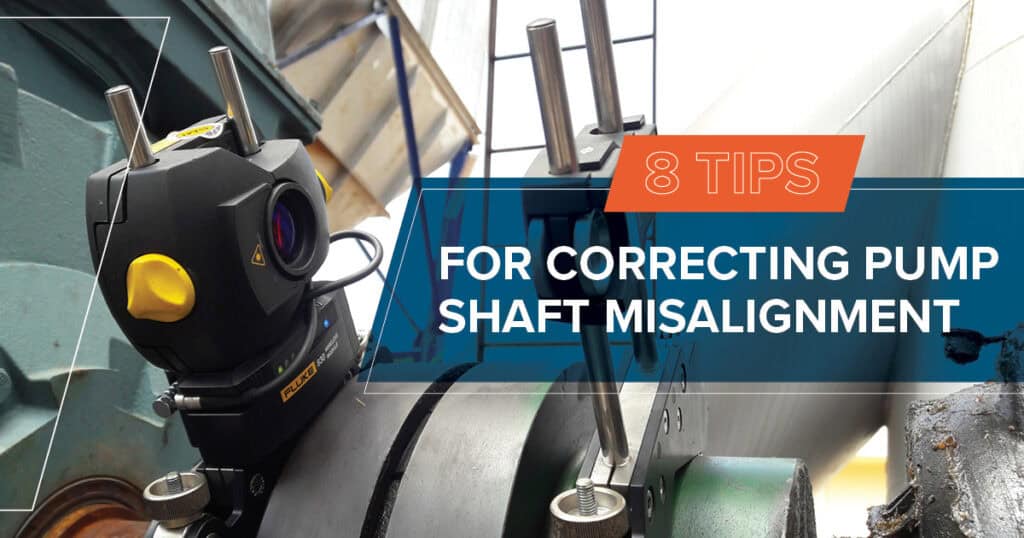Proper pump shaft alignment is essential to maintain the performance and longevity of a pump system. Misaligned shafts can lead to excessive wear, increased vibration, and premature equipment failure. This can result in costly repairs and a decrease in operational efficiency. Fortunately, pump shaft misalignment can be properly corrected with the right approach, technology, and skills. Here are several key tips to ensure optimal alignment:
1. Understand the Types of Misalignment
Before diving into the corrective process, it’s important to recognize the two primary types of misalignment:
- Angular Misalignment occurs when the centerlines of the pump and motor shafts are at an angle to each other.
- Parallel Misalignment happens when the shafts are not properly aligned horizontally or vertically, even though they are parallel.
Identifying the type of misalignment present is crucial to determine the corrective actions required. Tools like dial indicators or laser alignment systems can accurately detect and quantify the type and extent of the misalignment.
2. Use the Right Tools
Precision is key when correcting pump shaft misalignment, and using the right tools and technology makes all the difference. Traditional equipment like the straight edge and feeler gauge are still in use today. However, they may not completely offer the accuracy needed for more complex pump systems. Dial indicators offer better precision, but modern laser alignment systems generally provide the most efficient and accurate results.
Laser systems can quickly detect both angular and parallel misalignment, providing real-time feedback on the alignment status. This reduces guesswork, improves precision, and saves time. Those with more experience may also use manual techniques in addition to modern technology. This can provide extra assurance the shaft alignment is corrected properly.
3. Check Soft Foot
Soft foot is a condition in which one or more feet of the pump or motor don’t sit evenly on the baseplate. If this occurs, it can cause an uneven distribution of stress and lead to misalignment.
To correct soft foot, loosen the mounting bolts and check each foot for gaps using a feeler gauge. Insert shims under the feet until they all make proper contact with the base to adjust as needed. This should be done before attempting any shaft alignment, as an uneven foundation can lead to misalignment issues later.
4. Perform Rough Alignment First
Perform a rough alignment before moving to more precise adjustments. Use simple methods such as a straight edge across the coupling or manually moving the shafts to align visually. While this won’t be exact, it helps reduce the amount of fine-tuning later in the process. Once rough alignment is achieved, you can proceed with more accurate tools like a laser alignment system or dial indicators.
5. Account for Thermal Expansion
In high-temperature environments, thermal expansion can alter the alignment of the pump and motor shafts as the equipment heats up. If you’re aligning a system that will be exposed to significant temperature changes during operation, it’s important to account for thermal growth.
Some alignment systems offer thermal offset settings, which maintain alignment even after the equipment reaches operating temperature.
6. Recheck Alignment After Adjustments
After making adjustments, always recheck the alignment to ensure the correction has been successful. Sometimes tightening bolts or moving components can cause slight shifts in the shafts. Verify the alignment once again after securing all bolts and components to avoid any unexpected issues during operation.
7. Schedule Regular Alignment Checks
Misalignment can occur gradually over time as a result of operational vibrations, temperature fluctuations, or even minor impacts. Implementing a preventative maintenance strategy that includes regular alignment checks prevents unexpected breakdowns and ensures continued operational efficiency.
8. Work with an Alignment Expert
If you aren’t fully confident in your shaft alignment skills or tools, you can partner with a pump management service provider. At DXP Pacific, we use both the latest alignment technology and old-school methods to ensure proper alignment during installation and through ongoing maintenance.
To learn more about our full suite of pump management and repair services, contact DXP Pacific today.

